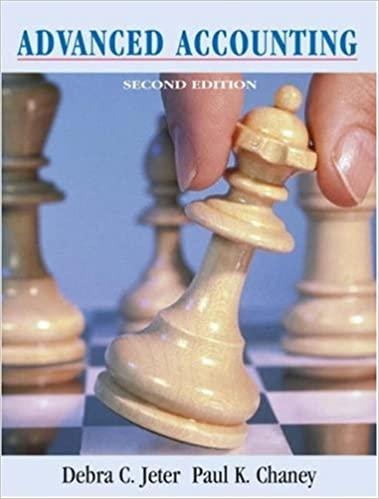Question
Case 2: Inside Information (Chapter 11) Jim Brock was an accountant with Hubbard Inc., a large corporation with stock that was publicly traded on the
Case 2: Inside Information (Chapter 11) Jim Brock was an accountant with Hubbard Inc., a large corporation with stock that was publicly traded on the New York Stock Exchange. One of Jim's duties was to manage the corporate reporting department, which was responsible for developing and issuing Hubbard's annual report. At the end of 2017, Hubbard closed its accounting records and initial calculations indicated a very profitable year. In fact, the net income exceeded the amount that had been projected during the year by the financial analysts who followed Hubbard's stock. Jim was pleased with the company's financial performance. In January 2018, he suggested that his father buy Hubbard's stock because he was sure the stock price would increase when the company announced its 2017 results. Jim's father followed that advice and bought a block of stock at $25 per share. On February 15, 2018, Hubbard announced its 2017 results and issued the annual report. The company received favorable press coverage about its performance, and the stock price on the stock exchange increased to $32 per share.
Required Use the Ethical Decision Framework in Exhibit 1-9 to complete the following requirements:
EXHIBIT 11.1Advantages and Disadvantages of Stock versus Debt Financing
Exhibit 11.2Retained Earnings Connects the Income Statement and the Balance Sheet
Exhibit 11.3Statement of Stockholders Equity
11.4 The Relationship between the Income Statement and the Statement of Comprehensive Income
Exhibit 11.5Stockholders Equity Section
Exhibit 11.6The Effect of Stockholders Equity Items on the Statement of Cash Flows
11.7 Recording Investments in a Sole Proprietorship
11.8 Recording Investments in a Partnership
11.9 Distribution of Income
1. Recognize an ethical dilemma: What ethical dilemma(s) do you face?
2. Analyze the key elements in the situation:
(a). Who may benefit from Jim's action? Who may be harmed?
(b). How are they likely to benefit or be harmed?
(c). What rights or claims may be violated?
(d). What specific interests are in conflict?
(e). What are your responsibilities and obligations?
Step by Step Solution
There are 3 Steps involved in it
Step: 1

Get Instant Access to Expert-Tailored Solutions
See step-by-step solutions with expert insights and AI powered tools for academic success
Step: 2

Step: 3

Ace Your Homework with AI
Get the answers you need in no time with our AI-driven, step-by-step assistance
Get Started


